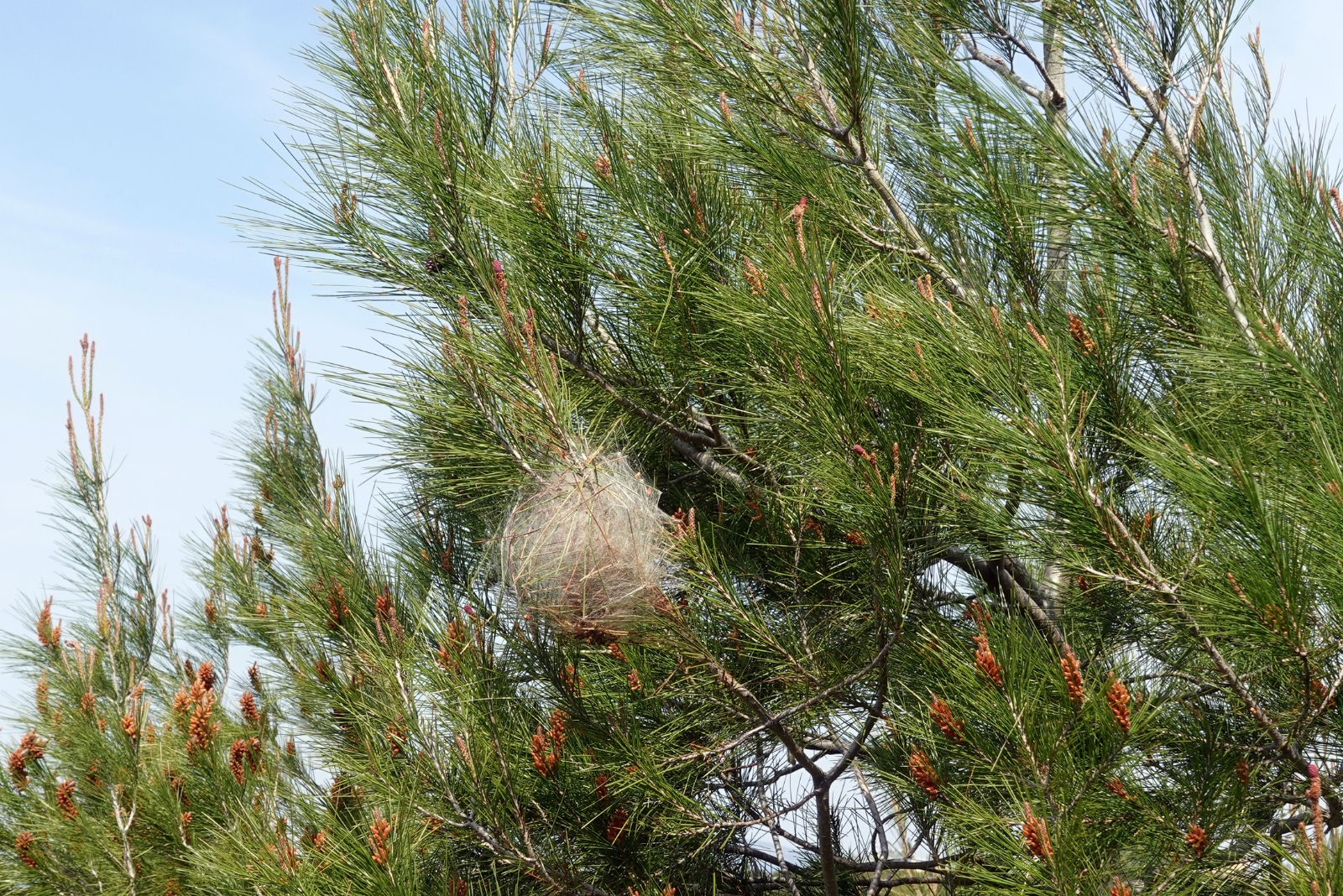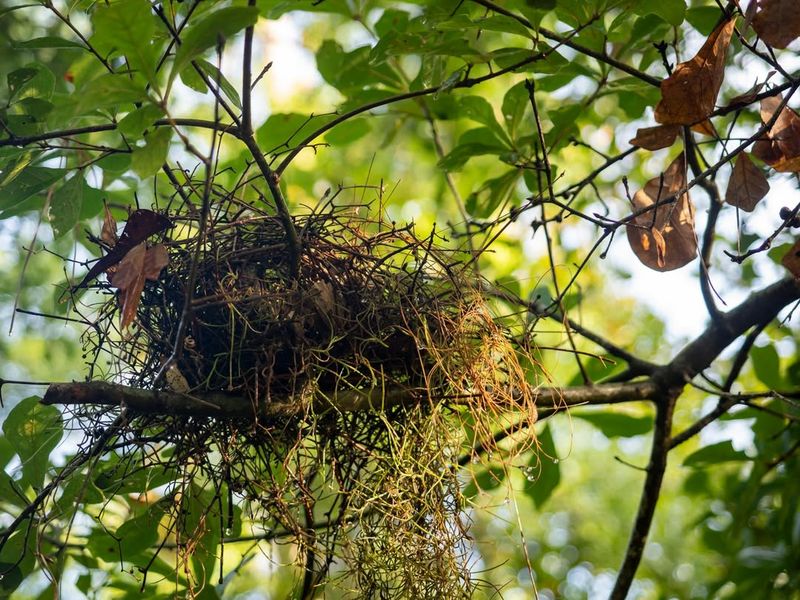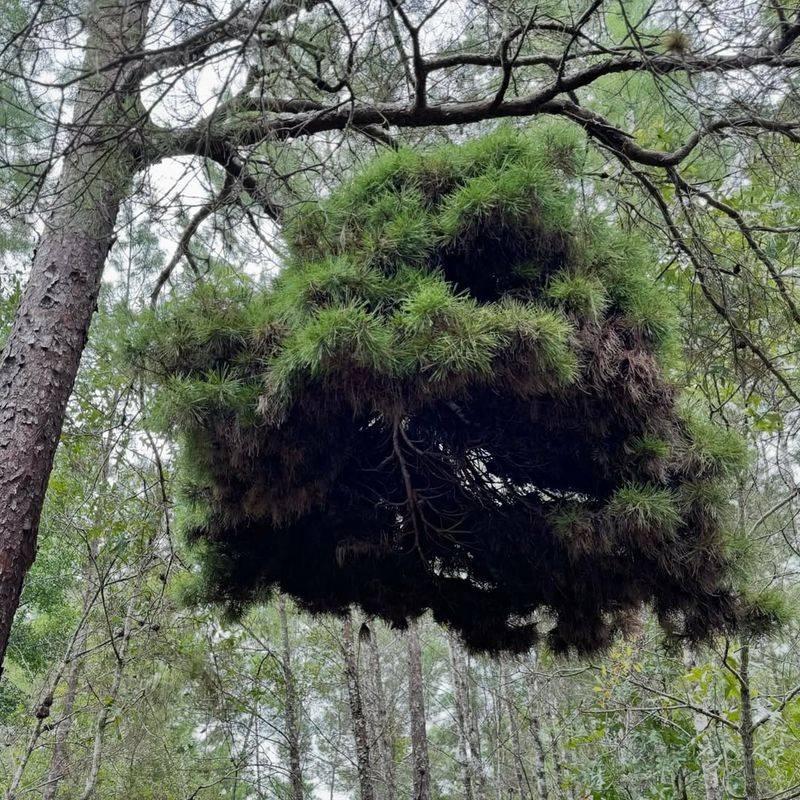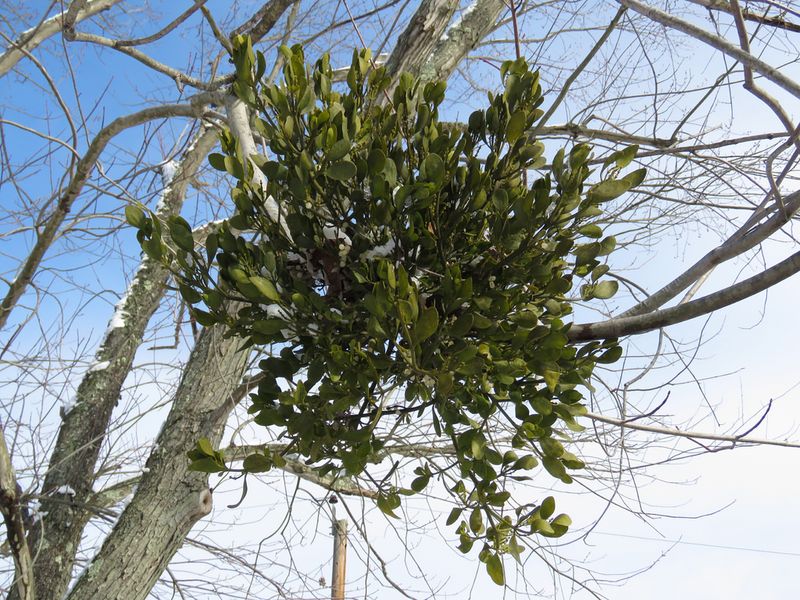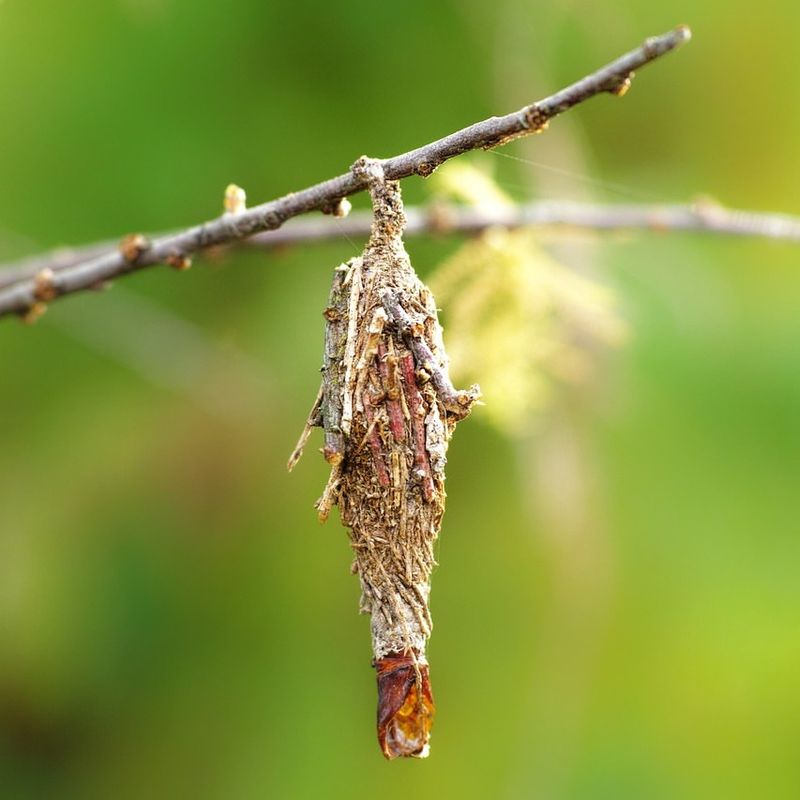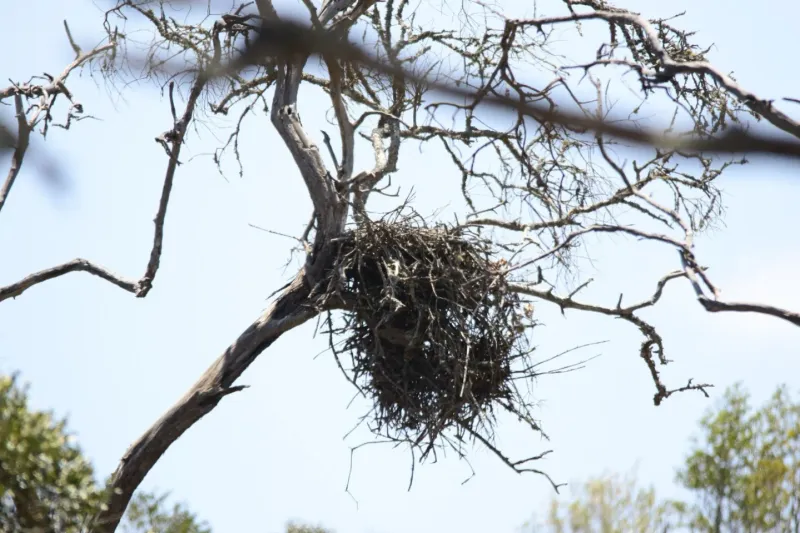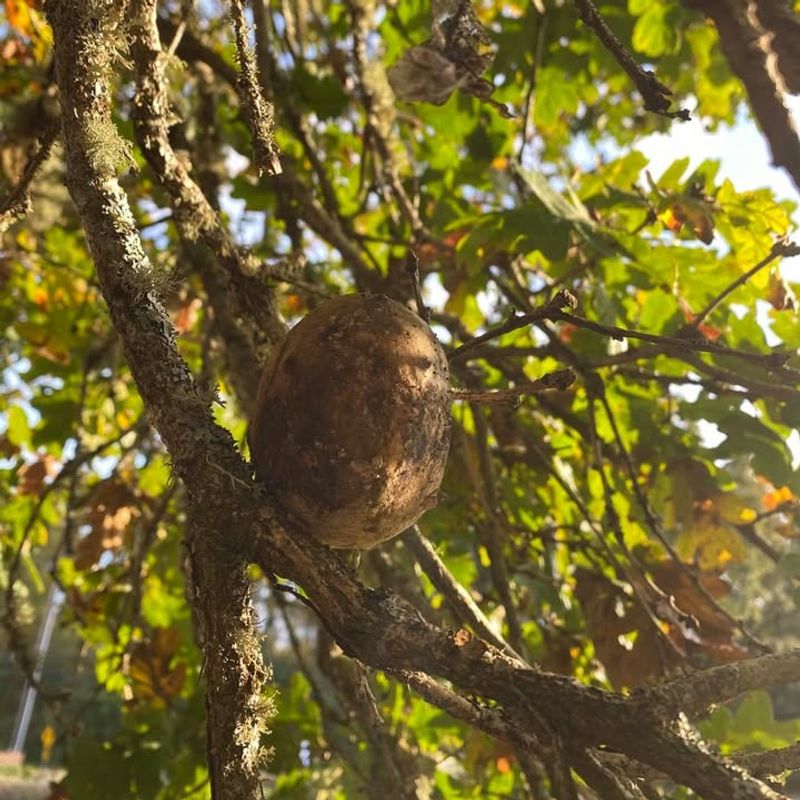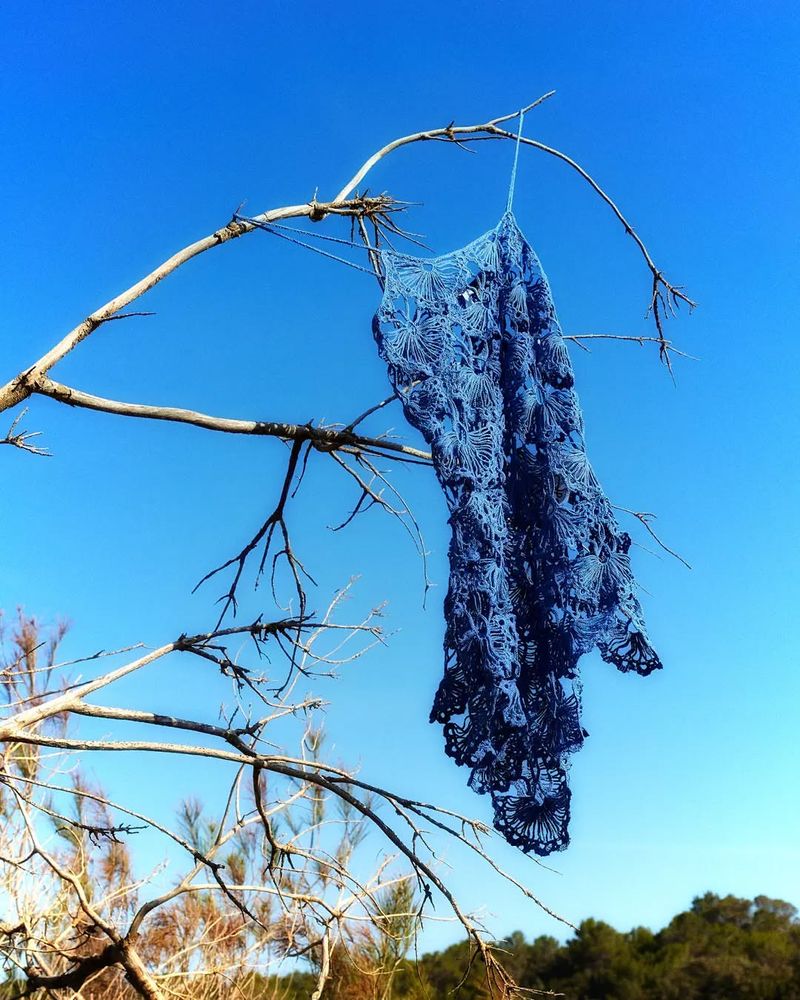Strange clusters high in Nebraska trees can look like bird nests at first glance, but not all of them are. As leaves drop in fall, other natural formations start to stand out—some built by insects, others caused by plant growth itself.
Knowing the difference helps protect trees and wildlife alike. That “nest” in the branches might be something entirely different.
1. Squirrel Dreys
Squirrels build cozy homes called dreys that often get mistaken for bird nests. Made from leaves, twigs, and moss, these round structures sit wedged between branches and can be surprisingly large.
Unlike bird nests, dreys have multiple layers for insulation and usually feature a side entrance. Eastern gray squirrels and fox squirrels commonly build these in Nebraska’s oak and maple trees.
During winter, you’ll spot them more easily when leaves fall. Squirrels often construct several dreys throughout their territory as backup shelters.
2. Witch’s Broom Growth
Trees sometimes develop weird clusters of branches that look remarkably nest-like. Called witch’s brooms, these abnormal growths result from diseases, mites, or genetic mutations that cause excessive branching in one spot.
Hackberry trees across Nebraska frequently display these formations, creating dense tangles that fool many observers. The growth remains permanently attached to the tree, unlike actual nests.
While they might look concerning, witch’s brooms rarely harm the overall tree health. Many birds actually use these dense clusters as shelter or nesting platforms.
3. Mistletoe Clumps
Mistletoe isn’t just for holiday kisses—it’s also a parasitic plant creating nest-like masses in tree canopies. This evergreen plant sends roots into tree branches, stealing water and nutrients while forming rounded, bushy clumps.
Nebraska’s cottonwood and elm trees often host these greenish bundles year-round. From below, mistletoe clusters appear suspiciously similar to leafy nests, especially during summer months.
Birds spread mistletoe by eating its berries and depositing seeds on branches. Heavy infestations can weaken trees, so identifying mistletoe correctly matters for tree health.
4. Bagworm Cases
Bagworms create protective cases from silk and plant material that dangle from branches like tiny ornaments. These cone-shaped structures house caterpillars that eventually transform into moths, leaving behind empty cases that persist for years.
Evergreens and deciduous trees throughout Nebraska suffer from bagworm infestations. When numerous cases cluster together, they resemble miniature nests or unusual growths.
Each case measures one to two inches long and blends perfectly with surrounding foliage. Removing bagworm cases in winter prevents spring hatching and protects your trees from defoliation damage.
5. Raptor Nests
Hawks, eagles, and owls construct massive stick platforms that dwarf typical songbird nests. Red-tailed hawks frequently build in Nebraska’s tallest trees, creating structures three feet wide or larger.
These impressive nests get reused and expanded annually, sometimes becoming enormous over several breeding seasons. Great horned owls often take over abandoned hawk nests rather than building their own.
Raptor nests feature thick, sturdy sticks arranged in flat platforms, quite different from the cup-shaped nests smaller birds create. Spotting one means you’ve got majestic predators nearby.
6. Galls And Tumor Growth
Trees develop peculiar lumps and bumps called galls when insects, bacteria, or fungi trigger abnormal cell growth. Oak trees in Nebraska commonly produce golf-ball-sized galls that cluster together, creating nest-like formations.
Gall wasps lay eggs inside tree tissue, causing the plant to form protective chambers around developing larvae. Crown galls caused by bacteria create woody tumors on trunks and branches.
Most galls don’t seriously harm trees, though heavy infestations stress younger specimens. Identifying galls helps distinguish natural plant responses from actual animal architecture in your trees.
7. Debris Accumulation
Strong prairie winds carry all sorts of materials into Nebraska trees, where branches trap them into nest-like formations. Plastic bags, tumbleweeds, leaves, and even paper products lodge in branch forks, creating convincing illusions.
After storms, you’ll notice these accumulations appearing overnight in previously empty trees. Cottonwoods with their dense branching patterns especially collect windblown debris.
Unlike real nests with intentional construction, debris piles show random arrangements and often include obviously artificial materials. Removing plastic debris helps wildlife avoid entanglement and keeps your landscape looking natural and healthy.

